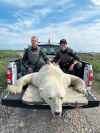A new reality to bear? Residents and scientists are trying to get a handle on the changing dynamic between the Arctic’s apex predator and the community of Churchill as climate change and other factors delay the majestic animals’ annual exodus out on to the ice
Read this article for free:
or
Already have an account? Log in here »
To continue reading, please subscribe:
Monthly Digital Subscription
$0 for the first 4 weeks*
- Enjoy unlimited reading on winnipegfreepress.com
- Read the E-Edition, our digital replica newspaper
- Access News Break, our award-winning app
- Play interactive puzzles
*No charge for 4 weeks then price increases to the regular rate of $19.00 plus GST every four weeks. Offer available to new and qualified returning subscribers only. Cancel any time.
Monthly Digital Subscription
$4.75/week*
- Enjoy unlimited reading on winnipegfreepress.com
- Read the E-Edition, our digital replica newspaper
- Access News Break, our award-winning app
- Play interactive puzzles
*Billed as $19 plus GST every four weeks. Cancel any time.
To continue reading, please subscribe:
Add Free Press access to your Brandon Sun subscription for only an additional
$1 for the first 4 weeks*
*Your next subscription payment will increase by $1.00 and you will be charged $16.99 plus GST for four weeks. After four weeks, your payment will increase to $23.99 plus GST every four weeks.
Read unlimited articles for free today:
or
Already have an account? Log in here »
Hey there, time traveller!
This article was published 01/12/2023 (706 days ago), so information in it may no longer be current.
CHURCHILL — As the mid-November waves crash against the rocky Hudson Bay shoreline, with only a thin line of ice visible on the far horizon, longtime polar bear guide Dennis Compayre voices a concern on the minds of many of his neighbours in recent weeks.
“It’s looking like we’re going to have bears around until December,” Compayre says as the grey sea water thrashes and churns.
Compayre gazes out at the bay from behind the wheel of his truck, just outside of Churchill, the small, remote northern Manitoba town only accessible by air or rail.
Born and raised in the port town approximately 1,000 kilometres north of Winnipeg, Compayre has been working as a bear guide for 40 years and witnessed many changes in how people coexist with polar bears, the apex predator of the North.
Once regarded as “great white rats,” bears used to congregate in the dozens at the local outdoor dump. Bears were regularly shot if they came into town, Compayre says, although that began to change with the introduction of Polar Bear Alert, a provincially managed polar bear control program, and the creation of a holding facility in the early 1980s — coined “polar bear jail” by locals — where the animals were held and later released.
Then came the growth of the tourism industry in the 1990s, creating economic incentive to develop a more tolerant attitude towards bears. The most recent data available show the town of about 870 residents — dubbed the polar-bear capital of the world — generated nearly $40 million in tourism revenue in 2017.
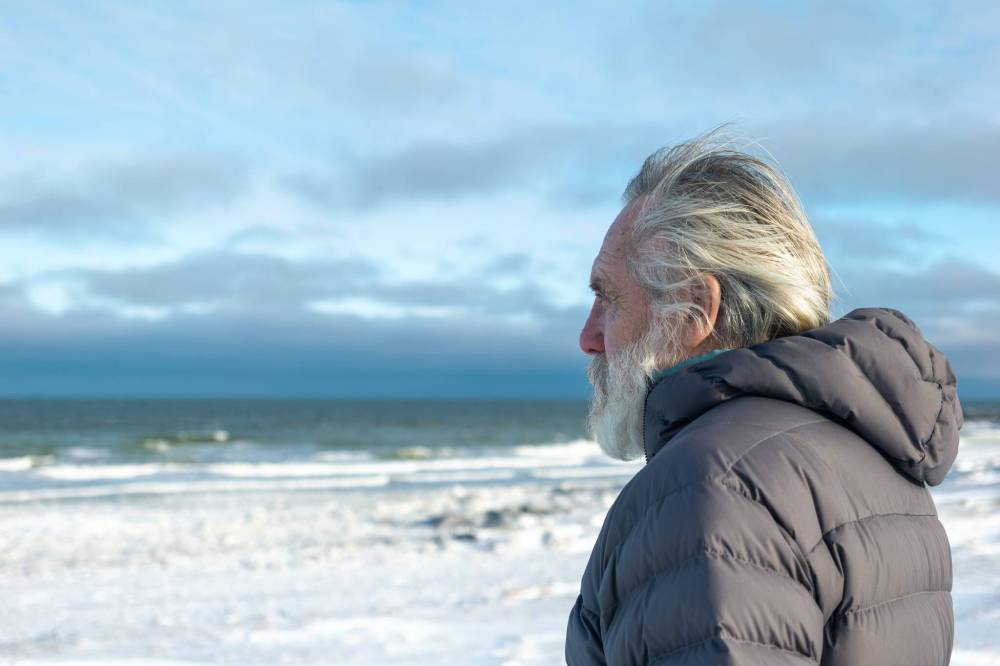
“They’ve taught us how to coexist with them,” Compayre says of the bears. “There is hardly any aggression shown by a polar bear unless he’s compromised and usually it’s because the human screwed up.”
Despite decades of change in Churchill, one thing has stayed the same — when Hudson Bay freezes over in the winter, the bears leave town to hunt on the ice.
“Seals are like opium to the bears. It doesn’t matter what you do on land, when that ice forms — the bears are gone,” Compayre says.
Polar bears are hardwired for life on the ice, stalking the holes in the ice for ringed seals, their primary food source. The western Hudson Bay population, one of 19 global subpopulations, has evolved to living with the rhythms of seasonal ice on the bay. They swim ashore in late summer when the ice melts and depart when it freezes over. Locals know: every year varies slightly in terms of when the ice comes and when the bears leave.
But in a year of extreme heat, both locally and globally, there has been heightened uncertainty of when Hudson Bay will freeze this year. The bears — and the people living closely with them — are still waiting for northwesterly winds to lock the ice to the shore, Compayre says.
“When people ask me to define climate change, what comes to my mind is the disruption of wind patterns,” he says.

This year, locals have observed ice forming followed by sudden southerly wind shifts, which blows out the ice and prevents bears from getting onto the bay.
“You see the ice out on the horizon … and some of the bears are out there on the ugly ice,” Compayre says of the thin sheet of ice faintly visible in the distance. “The others know they have to wait until the ice forms again and that cycle can last into December.”
Until then, there are more bears wandering into town and the risk of more encounters with humans.
As climate change increasingly drives El Niños — making the warmer global weather pattern both more frequent and more severe — residents in Churchill, and communities across Canada’s Arctic, are preparing for a new reality, one in which the largest land predator in the world comes into contact with people more often.
Record-breaking temperatures hit Hudson Bay in May, prompting an early breakup of the ice on the Churchill River and along the western shoreline. Days of extreme heat — reaching the high-20s to low-30s Celsius range — persisted through the summer months, atypical for a community that sees averages in the low 20s.
“I remember maybe one or two hot days in the summer when I was a kid, but now extreme temperatures are lasting for four or five days at a time,” says Nikki Clace, a member of northern Manitoba’s War Lake First Nation, who grew up in Churchill.
“This summer I bought an air conditioner, but what do you do when you’re a 1,000-pound polar bear who hasn’t eaten for three months and it’s 30 above for five days in a row?”
Those warm temperatures brought more bears on to land sooner than usual. One of the first polar bears to swim ashore outside Churchill was spotted by tourism operators on June 8.
“In 2022, I didn’t see a bear until July 19,” Drew Hamilton, a bear guide and local tourism operator, says. This year, he saw more bears than he had in previous years.
“All summer it was just hot and heavy with bears, and they were putting on a show,” he says.
Hamilton was intrigued to see many bears hunting geese, including a male bear that “took out a whole family.” Bears feasted on beluga carcasses by the rocky shoreline. A mother and her 400-pound two-year-old cub regularly wandered into town to covertly feed on cooking oil, dumped behind a restaurant, until they were darted and relocated by Polar Bear Alert.
Churchill’s record-breaking hot summer was part of a larger global trend as climate change exacerbates the El Niño weather pattern that brings warmer surface temperatures to the Pacific Ocean and, in turn, warmer temperatures.
“I think everyone’s holding their breath to see what happens with this El Niño shift over the next four or five years,” says Geoff York, senior director of research and policy with Polar Bears International. The group, with offices in Bozeman, Mont., and Winnipeg, is a non-profit organization dedicated to polar bear conservation across the Arctic.
This year, at least, the warming trend has been visibly clear in Churchill; the bears have stuck closer to town as they wait for the ice.
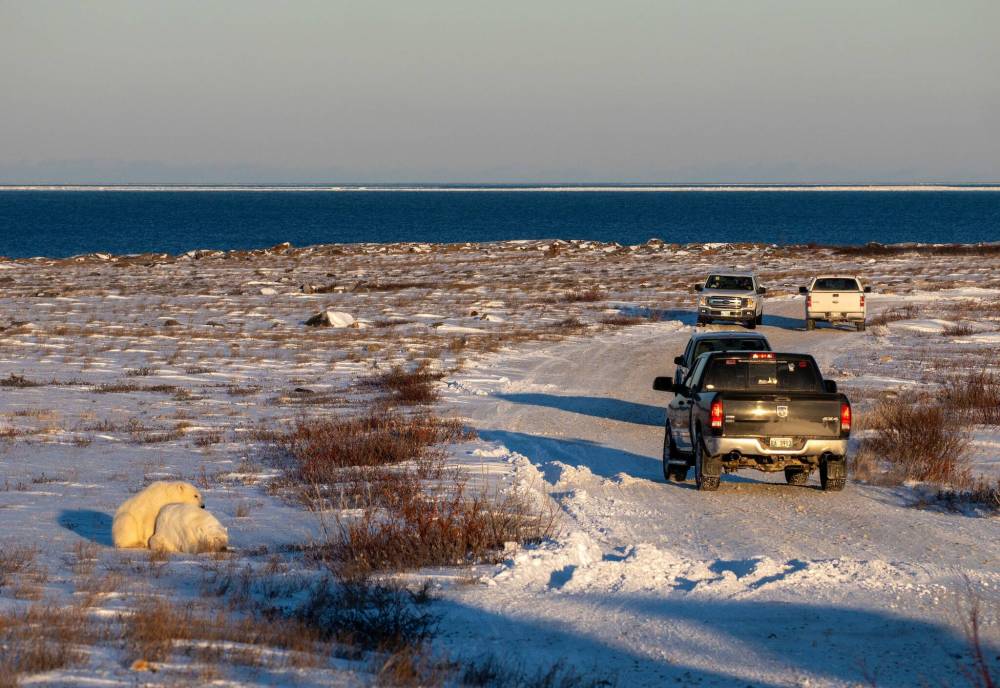
It’s not the first time the ice has been delayed. Compayre and others recall the 2015 and 2016 seasons when above-average temperatures persisted, the bay refused to freeze and the bears hung around until December.
But the trend of late-forming ice is more than just anecdotal.
A 2022 study determined the Arctic has been warming four times faster than the rest of the planet since 1979.
A 2016 study found that between 1979 and 2014, the length of the ice-free period in western Hudson Bay increased by nine days per decade.
Lengthening time on shore can have detrimental impacts on polar bears’ reproductive capacity, leading to smaller litters and fewer cubs making it to adulthood.
It can also be fatal: a 2022 study found adult polar bears can fast for up to 180 days — after that, their survival is at risk, particularly among adult males. Previous generations of polar bears in the western Hudson Bay population fasted on land for only a few months, coming ashore in early August and departing by November.
In his 2014 book, Arctic Icons, author Edward Struzik describes 1983 as “the worst year ever.” That year, a southerly chinook wind arrived mid-November and prevented polar bears from getting onto the ice. There were many close calls between people and bears, observations of skinny bears and a fatal mauling of a man (who had been carrying food in his coat pockets) on Nov. 29, 1983. Ten days after his death, ice floes locked in on the bay and the bears left town.
Polar bear attacks are rare. Fatal ones, even more so. The last attack in Churchill was 10 years ago. No one has died since the 1983 incident. Even outside Churchill, bears in the western Hudson Bay population rarely attack. The first fatal attack in Nunavut in nearly 25 years was in 2018, when a man was mauled to death 10 kilometres outside Arviat, a small hamlet along Hudson Bay.
But rare fatalities don’t mean there aren’t risks to polar bears spending more time in town, living side by side with residents.
It has already been an above-average year for bear occurrences — the term Polar Bear Alert uses for calls from the public about polar bears.
By late August, Polar Bear Alert had already received 76 bear-related calls, about four times more than the same date last year. By Nov. 22, the total reached 253.
When a person dials 675-BEAR, a 24-7 polar bear hotline in Churchill, Chantal Cadger Maclean, a conservation officer with Polar Bear Alert, and her colleagues are ready to respond within minutes.
“It doesn’t matter if that bear is trying to get through a window or walking down the street. You go from being sound asleep in bed to driving down the road with one hand and shooting off a bear banger with the other to escort that bear out of town,” says Maclean, referring to the noisemaking deterrent that sounds like a gunshot, but won’t physically harm a bear.

There’s nothing out of the ordinary about a polar bear strolling down the street in Churchill. The town, after all, was built directly in their migratory pathway.
Many bears are “funnelled through town” northward past the Town Centre Complex — a building that houses the town’s school, hospital and recreation centre — as they attempt to reach the Churchill River, which freezes before the bay, Maclean says.
On the morning of Oct. 30, as the school bus was picking up students, one of Maclean’s colleagues spotted a 500-pound bear ambling down Hendry Street, a street lined with homes.
“Right away parents heard the bangers and horn of the Polar Bear Alert truck. Locals know what those sounds mean — they grabbed their kids and brought them back inside,” Maclean says.
A team of conservation officers moved the bear out of town without incident.
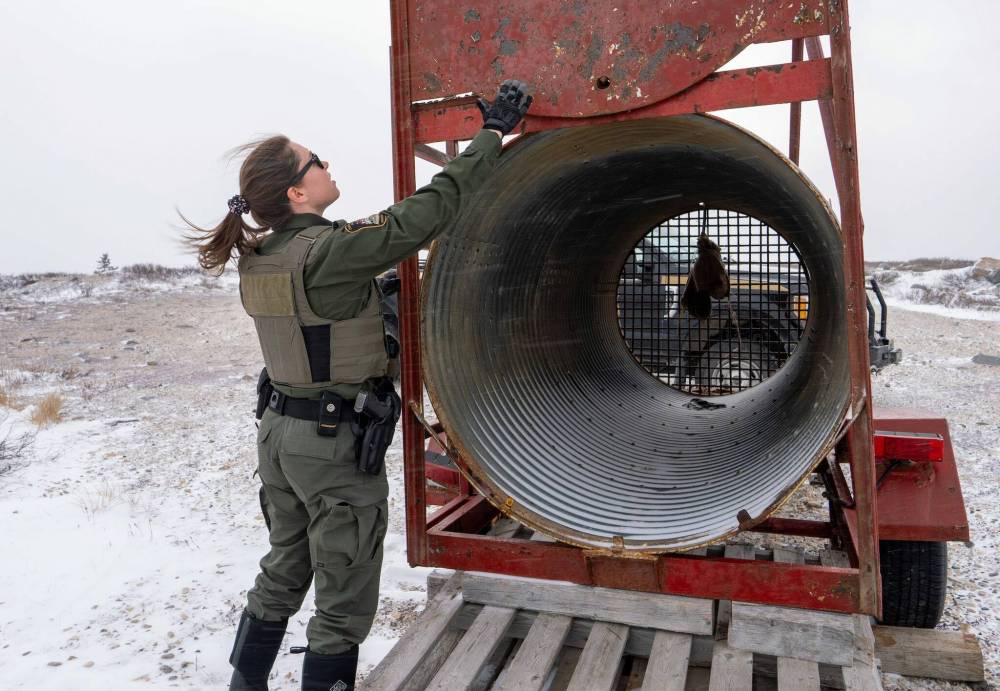
Maclean is quick to credit locals as “coexistence experts.” People in Churchill don’t live in constant fear of bears, she says, rather they know what it means to live in a place where you could step foot outside your front door and encounter a bear on any day of the year.
Locals keep their vehicle doors unlocked so if someone who meets a bear in the street needs a fast escape they can shelter inside. Others put down “Churchill welcome mats” outside their cabin windows: wooden boards with nails sticking sharp-side up. The first person to see a bear in town typically reports it on the town’s community Facebook page within minutes to alert others.
In his group chat, Hamilton recently suggested cyclists carry bear deterrents such as hand-held marine flares, which are safe, easy to deploy and effective.
Furthermore, many residents understand bear behaviour, Maclean says. They can differentiate between a hungry or agitated bear and one that’s just ambling through town.
But that doesn’t mean people don’t sometimes get complacent and make mistakes.
In mid-October, Maclean received a call that an off-leash dog had been grabbed by a bear on the rocks near Cape Merry, a Parks Canada-run national historic site on the northernmost edge of town. The incident turned out to be a defensive attack by a mother bear protecting her two young cubs, Maclean says. Her team responded and, fortunately, the mother retreated with her cubs and the dog survived.
The following week an 880-pound male bear broke through the wall of an indoor dump locals call L5. Conservation officers sedated the bear inside the facility and transferred him to the polar bear holding facility — the only such place in the world — where the animals are held for 30-days before being relocated north by helicopter.

Three additional bears were placed in the holding facility the same week.
Researchers have found “conflict bears” held for at least 20 days are less likely to re-enter a community.
By Nov. 22, they had handled 23 bears and released 15, with eight remaining in the holding facility.
“The bear activity is still pretty crazy right now,” says Kenny Shields, a bear guide and tourism operator.
One morning in November, he saw at least seven bears — including some family groups — congregating outside the exterior of the indoor dump. Odours from the building regularly attract bears, but seven was unusual. Shields watched Polar Bear Alert chase off a big male with firecrackers and later dart a mother bear and her young cub for transfer to the holding facility.
Ideally, Polar Bear Alert releases bears back onto the ice, which is cheaper than relocating them by helicopter, Maclean says.
In 2022, Polar Bear Alert released the first bear onto the frozen bay on Nov. 10.
This year, on the same day, there was no ice in sight.
Even though the quality and duration of ice pose serious long-term challenges for the survival of polar bears, there’s no absolute answer on what it all means for population numbers.
At first glance, a 2021 aerial survey of the western Hudson Bay area, which includes Churchill, indicated the population declined by 224 bears between 2016 and 2021. But it’s unclear whether that marked decline is due to reduced survival, hunting or emigration of bears into neighbouring areas.
That’s where things can get muddy. A subsequent aerial survey in 2021 of the southern Hudson Bay polar bear population — members of which also roam in Hudson Bay, but typically further south and down into James Bay — found an increase in the number of bears: 224. The authors suggest there’s some genetic crossover between the two groups, raising the possibility bears move between populations.
The idea that some bears may be emigrating — not simply dying off because of the lack of ice — is a point of contention among locals.
Compayre is frustrated with the overly simplistic story of melting sea ice and hunger making polar bears more dangerous, which he feels overlooks the complexity of the situation.
The bears he’s observed this season have been in good shape. According to local father-and-son guide team Morris and James Spence, two sets of mothers with three cubs were observed emerging from maternity dens in Wapusk National Park in March 2022. Having three cubs is now considered rare, although it “still happens,” according to Morris, who has been observing mothers and cubs for the past 40 years.
“People come here with a lump in their throat because they’re looking at a ‘doomed species starving to death’ because that’s what they were told,” Compayre says. “And it’s far from the truth.”
Compayre doesn’t deny the effects of climate change and thinning sea ice will have a negative impact on polar bears, but he also points to their adaptive abilities to survive.
“There’s going to be a huge learning curve, but they’re certainly not all going to die,” he says.

Over the last century, sea ice loss and population decline hasn’t been a linear-event, says York, the senior director with Polar Bears International. There have been periods of what’s not necessarily recovery, but stability.
“We’ve had a recent period of eight to 10 years of stability,” he says.
Long-term climate projections and the increase in frequency of days with extremely warm conditions, however, indicate longer ice-free periods may result in bears searching for supplemental food on land — and inadvertently coming into conflict with people.
This could pose serious challenges for coexistence across Canada’s North, York says, with new risks in places where polar bears and people haven’t historically overlapped, including communities located along the southern Hudson Bay — and enhanced risk in places where they have coexisted for thousands of years.
This summer, for example, a 70-year-old man and his son and daughter survived a polar bear attack in their tent, 140 kilometres northeast of Kangiqsualujjuaq, an Inuit community in Nunavik, Que.
“In the case of Indigenous communities in Canada’s North, polar bears are just another potential impact of a changing climate that people had nothing to do with,” York says. “But they’re left with the consequences.”
Douglas Clark, a University of Saskatchewan-based specialist in human-polar bear interactions, cautions against oversimplifying the narrative of sea ice loss and increased conflict.
“Not every interaction is a conflict,” Clark says, noting there are often interactions where people and bears are aware of one another, but are not high-risk situations.
Clark studies the relationship between the number of days bears spend on land, frequency of visitation and body condition. He relies on non-invasive methods, such as camera-traps at research facilities in Churchill and Wapusk National Park, to the southeast.
“The dominant narrative of bears and people interacting in the context of climate change is that the hungrier bears are, the more likely they are to come around,” Clark explains.
Contrary to that narrative, his research has found there’s no greater probability of skinny or food-stressed bears visiting human infrastructure more frequently. The greater the number of days on shore, however, the more likely it was for all bears, regardless of age, sex or body condition, to visit the facilities where his cameras are stationed.
That said, Clark points to research showing nutritionally stressed, underweight male bears are disproportionately involved in predatory attacks.
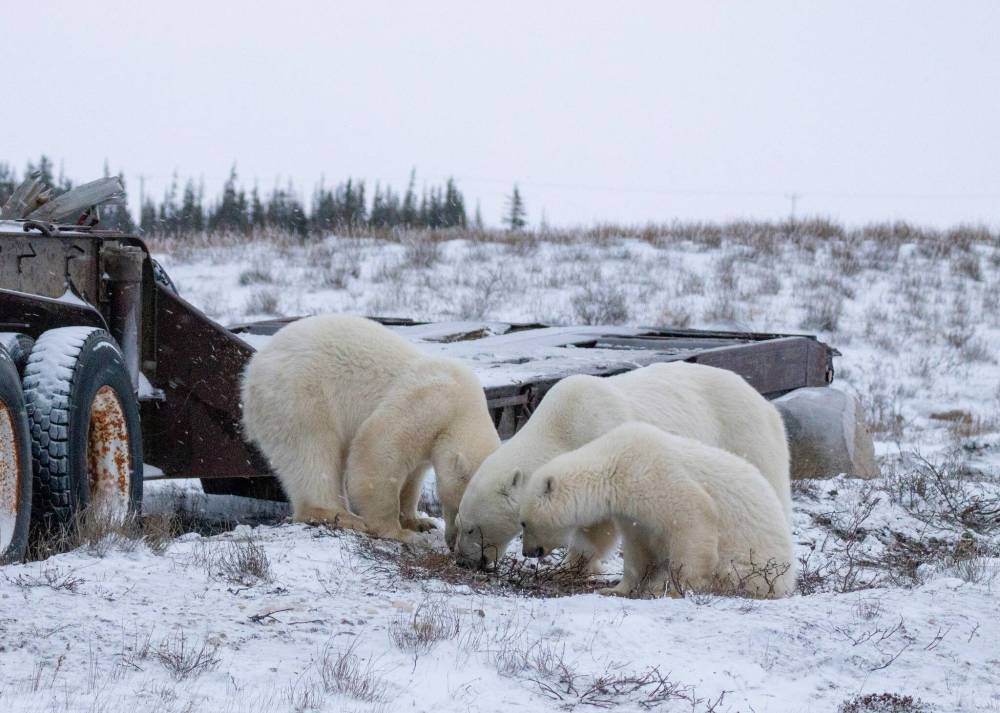
Nevertheless, he’s concerned there’s a lack of understanding of the complexity at play.
“There has been a tremendous simplification of the discourse around polar bears over the years. I think we’ve radically underestimated the effect of local conditions, including the role of attractants and habituation on the distribution of bears,” Clark says.
He points to the history of big changes in Churchill and around Hudson Bay, including the closure of the outdoor landfill in 2005, which used to attract large aggregations of food-habituated bears. The town transformed a former military building into an indoor facility for storing waste.
Since the closure of the dump, the number of bears annually euthanized by Polar Bear Alert to protect public safety has decreased from more than 10 to less than one.
Odours from the indoor waste facility still attract bears — such as when community members recently observed the seven bears patrolling the perimeter of the building.
Today, communities around Hudson Bay, including the Inuit community of Arviat, are experiencing an increase in human-polar bear encounters, potentially related to waste management, Clark says. An outdoor waste dump on the edge of Arviat, a growing community of 3,000 people in Nunavut, is considered a hot spot for polar bear activity.
“We may not be able to do much to keep polar bears and people from encountering one another, but when we do encounter one another, we have control over how we prevent escalation and I think this gives us something we can focus on that’s pragmatic,” Clark says.
York agrees. He’s seeing an uptick in interest from communities and governments, alike, to better prepare for increased human-polar bear interactions and potential conflict.
“What can we do to make sure communities have the tools they need to be safe on the landscape?”
In 2022, Churchill residents formed a Bear Smart Working Group, with support from Polar Bears International, to collectively voice their concerns related to the management of polar bears.
Clace serves on the working group. She grew up in Churchill listening to the stories of her grandmother and mother, who always reminded her: “This is polar bear country and you just live in it.”
Clace joined the group to raise her concerns from a pedestrian perspective in Churchill.
“I don’t drive — I walk a lot,” Clace says. “People without access to vehicles, or rides to work, this is a largely overlooked population. We need to make sure that people have access to get to work, or school, or get home safely because it’s often people who are walking that run into polar bears.”
Hamilton, a bear guide and another member of the working group, says there’s room for community improvement when it comes to living with bears, namely reducing food attractants in town.
“In the summer they say, ‘Don’t walk on the beach behind the complex (because of bears),’ but if you go down behind there at 7:30 a.m. every morning, it smells like bacon,” Hamilton says. “The cafeteria is venting out bacon over the bay — and we wonder why these bears are turning up there.”
Bear-proof garbage bins aren’t yet mandatory, or accessible to everyone in Churchill, he adds.
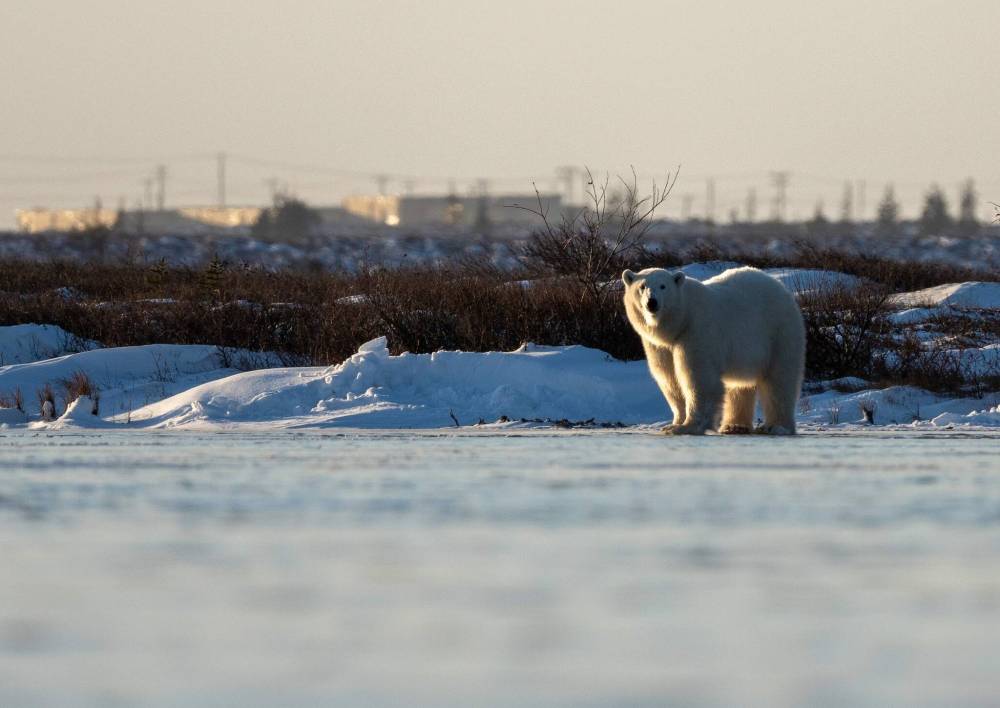
“The children’s park is a perfect example of the Churchill conundrum. There’s an open trash can right in front of the park,” he says.
On Nov. 23, the ice began to lock to the shoreline of Hudson Bay and some polar bears ventured out to hunt for seals. Polar Bear Alert released the last of the bears at the holding facility back onto the ice on Nov. 25, but several days later, strong currents opened up the bay again.
Ice coverage on Hudson Bay was around six per cent. Forty years ago, the average coverage by the same date was 39 per cent. Locals say there are still bears remaining on the shore.
The challenges of living with polar bears ambling down residential streets is only poised to become more complex in the face of an increasingly warming climate.
Living in a polar bear migratory pathway means people could encounter a bear on any day of the year, but locals are hopeful managing food attractants, waste and human behaviours can help reduce the risks to people — and to bears.
Coexisting with polar bears is going to require a conscious decision on the part of people to make the necessary changes to allow bears to exist on the landscape, Hamilton says.
“We’ve already shown the ability to wipe out whole populations elsewhere, so we need to make a decision, yes, we are having bears. Or it naturally goes the other way.”
There isn’t a magic bullet for coexisting with polar bears, he says.
“It’s going to be a lot of incremental improvements, but I think we’re trending towards the good.”

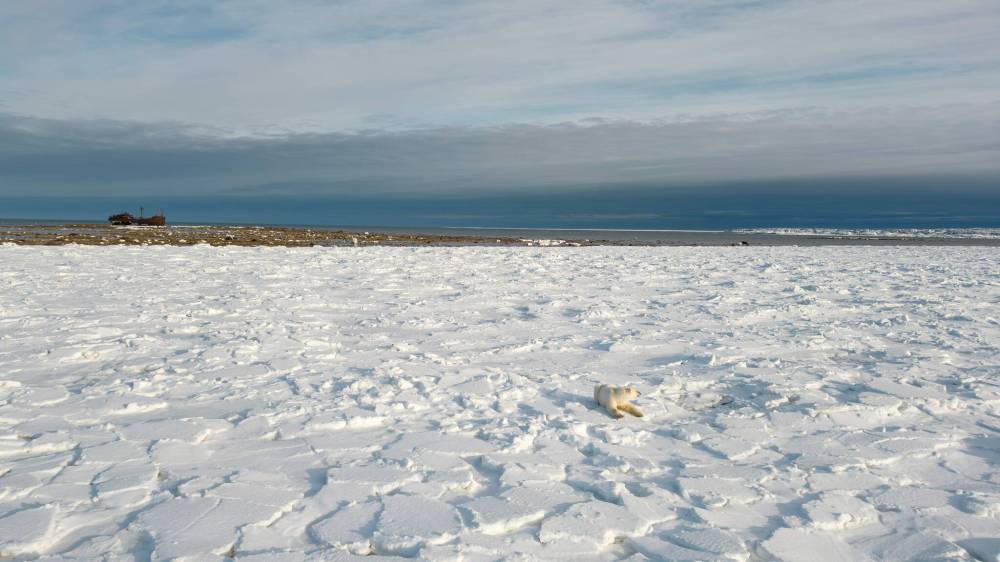
History
Updated on Friday, December 1, 2023 4:12 PM CST: Removes duplicate copy

